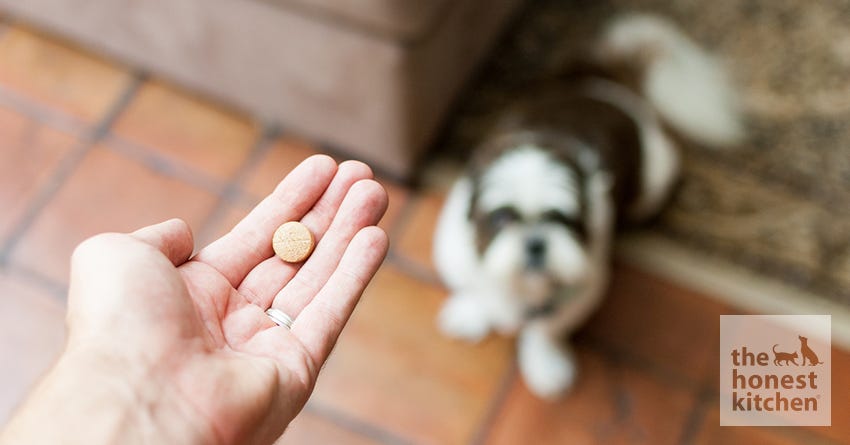How to Give Your Dog a Pill (and other medications)

Giving medications can be tough—especially if you're uncertain how to administer them.
Your dog will sense this and may avoid you, struggle, or fight you. If you're confident, know what to do, and can do it quickly, then struggles should become a thing of the past.Before You Leave the Veterinarian's Office...
When your vet prescribes medication, there are several questions you should ask. First, "what is this medication?" Then, "what is the medication for?" "What results does she expect from it?" "What side effects should I keep an eye out for, and which ones are serious?" Don't be embarrassed asking these questions. Make sure you know how often to give the medication, how much, and for how long. With many pills, the prescription will be for a specific number of days and you will get only that number of pills. For example, a prescription is one pill a day for seven days, so you go home with seven pills. If your dog needs a liquid medication to take by mouth, or he needs eye medication, the bottle of medication is rarely measured as accurately as pills are. Make sure you understand the dosage details. Ask if there's anything else you need to know: Can the medication be given with food? Should certain foods be avoided? If there's more than one medication can they be given at the same time or do they need to be spread out? If so, how far apart?Giving a Pill
The most common technique of giving a pill is hiding it in a bit of food. In fact, this is popular enough that there are commercial, edible pill holders. You place the pill in a pocket and give the whole thing to your dog. This makes giving your dog medication easy; especially if he's an eager eater. However, if your dog takes food gingerly, sniffs everything before eating, or has previously bitten down on a bitter tasting pill, then this technique won't work as well. An alternative method of giving pills, and the technique used by most veterinary technicians, may be quicker. While learning how to do this, put a leash on your dog. Scoop him close to your left side (or put small dogs on your lap) and drop the leash to the floor, putting your left foot on it. This will make sure your dog doesn't run away from you. Hold the pill in your right hand. With your left hand, reach over your dog's head, placing your hand over the top of his muzzle. Gently put pressure on his top lips with your index finger and thumb. When he opens his mouth to relieve the pressure, tilt his head back so you straighten his throat. With your right hand, drop the pill to the back of his tongue. Let his head return to a normal position, close his mouth, keep it closed, and gently rub his throat. Watch for him to swallow.Giving Liquid Medication
Liquid medication is usually administered via syringe or dropper. If the medication comes with a small medicine cup, ask your veterinarian for an appropriately sized syringe or dropper. Measure out the correct amount of medication. Leash the dog, and scoop him close to your left side. Or, as with giving pills, place a small dog on your lap. Your left hand can hold the dog's collar to help keep his head relatively still. Place the tip of the syringe or dropper in the side of the dog's mouth toward the back. You don't want to put the medication toward the front of the mouth or tongue as the dog can spit it out. In the back of the mouth, he'll be more apt to swallow. Express the medication into the dog's mouth, then close his mouth, rub his throat and watch for swallowing. ©istockphoto/Tatomm
©istockphoto/Tatomm